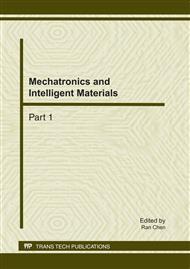p.389
p.395
p.400
p.406
p.411
p.416
p.421
p.425
p.430
Kerosene Based Magnetic Fluid Used in Magnetic Fluid Inclination Sensor
Abstract:
Kerosene based magnetic fluid which use kerosene as carrier liquid is characterized by better liquidity and higher magnetization which is qualified enough to use in magnetic fluid based inclination sensor. This paper provides several preparative parameters to control the physical property of kerosene based magnetic fluid during manufacture processing which use ferrous chloride and ferric chloride as forerunner reaction mass. The results show that the proper consistency of ferrous chloride and ferric chloride is 0.6mol/L. Secondly, the saturation magnetization of magnetic nano-particles is highest when the molar ratio between trivalent iron ion and bivalent iron ion is equal to 1.75. Thirdly, the proper reacted temperature is between 60~80°C and pH value should be controlled in a weak alkaline situation while six hours should be necessary for surfactant encapsulated enough around the magnetic nano-particles surface. At last, the saturation magnetization of kerosene based magnetic fluid increases with the increment of density and viscosity of magnetic fluid.
Info:
Periodical:
Pages:
411-415
Citation:
Online since:
February 2011
Authors:
Keywords:
Price:
Сopyright:
© 2011 Trans Tech Publications Ltd. All Rights Reserved
Share:
Citation:


